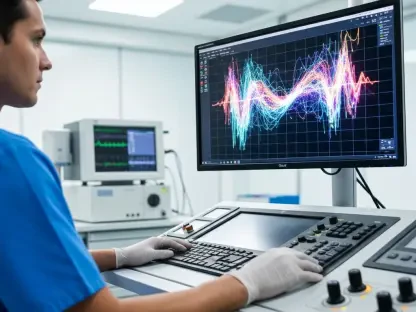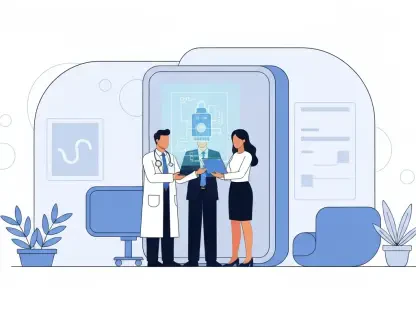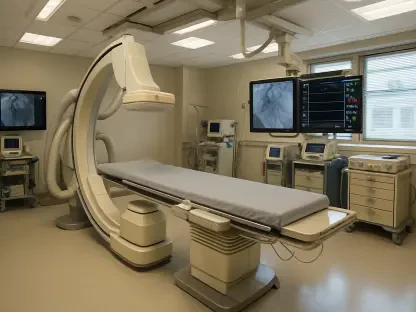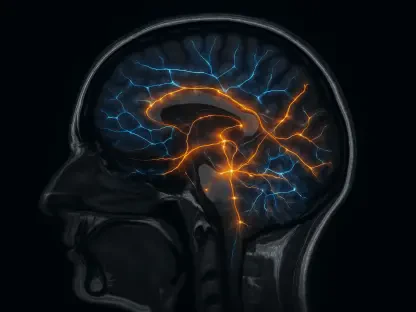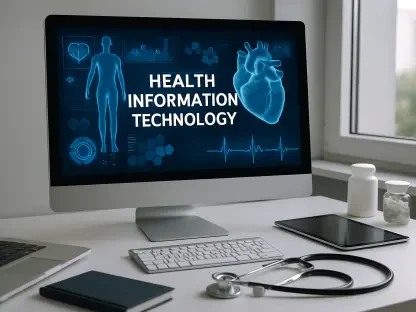Over the past few decades, medical technology has experienced unprecedented growth and development, leading to significant advancements that have transformed the landscape of patient care. Innovations in this field are reshaping how medical professionals diagnose, treat, and monitor patients, ultimately leading to improved outcomes and enhanced quality of life. As technology continues to evolve, the integration of advanced tools and systems into healthcare has become essential in meeting the needs of diverse patient populations. The impact of these innovations is profound, enabling healthcare providers to deliver more accurate, efficient, and personalized care. This article delves into key innovations in medical technology and explores their transformative effects on patient care.
Telemedicine Platforms: Revolutionizing Access to Healthcare
Telemedicine has revolutionized healthcare delivery by breaking geographical barriers and providing patients with access to medical professionals from the comfort of their homes. Patients can now consult with specialists without traveling, benefiting individuals in remote areas or those with mobility challenges. This shift towards virtual care has increased convenience and satisfaction among patients, who appreciate the flexibility and efficiency of online consultations.
In addition to improving accessibility, telemedicine platforms enhance cost efficiency. By reducing the need for in-person visits, healthcare systems can allocate resources more effectively. For healthcare providers, using telemedicine translates into reduced overhead costs, while patients save on transportation and time. These platforms have also enabled multidisciplinary care, allowing multiple specialists to collaborate on a patient’s treatment plan during virtual consultations.
Telemedicine has proven invaluable during public health crises, such as the COVID-19 pandemic. With an overwhelming number of patients seeking medical advice, telemedicine allowed healthcare systems to manage the influx of inquiries while minimizing the risk of virus transmission. Patients received timely care and guidance without overwhelming hospital resources. The enduring popularity of telemedicine suggests that it will continue to play a critical role in healthcare delivery long after the pandemic.
Wearable Health Technologies: Enabling Proactive Health Monitoring
Wearable health technologies have gained significant traction, allowing patients to monitor their health in real time. Devices such as smartwatches and fitness trackers can track various health metrics, including heart rate, activity levels, and sleep patterns. This continuous monitoring provides valuable insights for both patients and healthcare providers, enabling proactive management of chronic conditions and promoting overall wellness.
Wearable devices are evolving to include more advanced health-monitoring features. For example, newer devices can monitor blood oxygen levels, electrocardiogram (ECG) readings, and stress levels. These innovations are particularly beneficial for individuals with chronic conditions, such as diabetes or cardiovascular diseases, as they provide early warning signs of potential complications.
Beyond individual health, wearables contribute to broader public health efforts. Aggregated data from wearable devices can help researchers identify health trends, monitor disease outbreaks, and design targeted interventions. The integration of wearables into healthcare is set to expand further, with advancements in sensor technology and artificial intelligence enabling even more sophisticated monitoring capabilities.
Robotic Surgery Systems: Advancing Precision in Surgery
Robotic surgery systems have emerged as a groundbreaking innovation in surgical procedures, offering enhanced precision and control to surgeons. These systems allow for minimally invasive surgeries, which typically result in shorter recovery times, reduced pain, and less scarring for patients. The ability to perform complex procedures with greater accuracy has transformed various surgical fields, including urology, gynecology, and orthopedics.
The benefits of robotic surgery extend beyond improved patient outcomes. Surgeons using robotic systems experience less physical strain, as the systems mimic the natural movements of the human hand while eliminating tremors. This ergonomic advantage reduces fatigue and enables surgeons to perform longer and more complex procedures with greater confidence.
Robotic surgery systems are paving the way for telesurgery, where surgeons can perform operations remotely. With advancements in high-speed internet and robotic technology, telesurgery has the potential to bring specialized care to underserved areas, further democratizing access to healthcare.
Artificial Intelligence in Diagnostics: Enhancing Accuracy and Efficiency
Artificial intelligence (AI) is revolutionizing the field of diagnostics by improving accuracy and efficiency in detecting and diagnosing diseases. With the ability to analyze vast amounts of data quickly, AI-powered tools assist healthcare professionals in making more precise decisions, ultimately leading to better patient outcomes. Additionally, AI algorithms are continuously learning and evolving, which means their diagnostic capabilities improve over time. This advancement in technology is not only enhancing current diagnostic processes but also paving the way for innovative approaches to future medical challenges.
Artificial intelligence (AI) is reshaping the field of diagnostics by enabling faster and more accurate analysis of medical data. AI algorithms can analyze medical images, laboratory results, and patient histories to assist healthcare providers in making informed decisions. This technology has the potential to reduce diagnostic errors, significantly impacting patient outcomes.
AI is also being integrated into predictive analytics, allowing healthcare providers to anticipate patient needs and address potential health issues before they become critical. For example, AI-powered systems can analyze patterns in patient data to predict the likelihood of disease progression, enabling earlier intervention and more effective treatment plans.
AI is transforming clinical workflows by automating repetitive tasks, such as documentation and image analysis. This automation allows clinicians to focus more on patient care and less on administrative burdens. As AI evolves, its applications in diagnostics will likely expand, offering even greater support to healthcare professionals.
Mobile Health Applications: Empowering Patients Through Technology
In the modern age, the development of mobile health applications has significantly transformed the healthcare landscape. These applications empower patients by providing them with easy access to medical information, enabling remote monitoring, and facilitating communication with healthcare providers, thus reducing the need for in-person visits. This technological advancement not only promotes patient engagement and self-management of health conditions but also improves overall healthcare outcomes.
Mobile health applications have gained prominence as essential tools for enhancing patient engagement and empowering individuals to manage their health proactively. These applications offer a wide range of features, including medication reminders, appointment scheduling, and access to health resources. By placing health management directly in the hands of patients, mobile applications foster a sense of responsibility and encourage individuals to take charge of their well-being.
Beyond individual use, mobile health applications facilitate population health management. For instance, healthcare organizations can use these platforms to disseminate educational content, monitor patient adherence to treatment plans, and gather valuable health data. This dual-purpose functionality makes mobile health applications a vital component of modern healthcare systems.
Mobile health applications facilitate better communication between patients and healthcare providers. Secure messaging features enable patients to ask questions, share concerns, and receive timely advice from their healthcare teams. This direct line of communication strengthens the patient-provider relationship and ensures that patients feel supported in their health journeys. As mobile technology advances, the potential for these applications to improve patient care remains substantial.
3D Printing in Healthcare: Transforming Medical Manufacturing
The advent of 3D printing has introduced a new era of customization in healthcare. This technology enables the production of patient-specific medical devices, such as prosthetics, implants, and surgical instruments. By tailoring these devices to individual needs, 3D printing enhances the effectiveness of treatments and improves patient comfort.
One of the most exciting applications of 3D printing is in bioprinting, where researchers develop techniques to print tissues and organs. While still in its early stages, bioprinting holds the promise of addressing the global shortage of organ donors and revolutionizing transplant medicine.
3D printing is also used in surgical planning and education. Surgeons can create accurate models of a patient’s anatomy to practice complex procedures, reducing the risk of complications during the actual surgery. This combination of customization, innovation, and practicality underscores the transformative potential of 3D printing in healthcare.
Virtual Reality in Medical Training: Enhancing Education and Patient Experience
Virtual reality (VR) is making waves in medical education and patient care. For medical students and professionals, VR offers immersive training experiences that simulate real-life scenarios. This hands-on approach allows learners to practice procedures, hone their skills, and gain confidence in a risk-free environment.
In patient care, VR is used for pain management and mental health therapy. By immersing patients in calming or engaging virtual environments, VR can reduce pain perception and alleviate anxiety. For individuals with conditions such as post-traumatic stress disorder (PTSD) or chronic pain, VR therapy offers a non-invasive alternative to traditional treatments.
As VR technology becomes more accessible, its applications in healthcare are expected to grow, further enriching medical education and patient care experiences.
Blockchain in Healthcare: Securing Patient Data
Blockchain technology is emerging as a game-changer in healthcare, offering enhanced security, transparency, and efficiency in managing patient data. By utilizing a decentralized ledger, blockchain ensures that medical records are tamper-proof and accessible only to authorized parties. This technology addresses critical challenges such as data breaches and unauthorized access, providing patients with greater control over their information.
In addition to security, blockchain can streamline administrative processes, such as verifying insurance claims and maintaining accurate patient histories. This reduces redundancies and accelerates workflows, saving time and resources for healthcare providers. The integration of blockchain into healthcare systems has the potential to revolutionize data management and build trust between patients and providers.
Internet of Medical Things (IoMT): Connecting Devices for Smarter Care
The Internet of Medical Things (IoMT) is transforming healthcare by connecting devices and enabling seamless data exchange. IoMT encompasses a wide range of interconnected devices, from wearable monitors to smart infusion pumps, all of which share real-time data with healthcare systems. This connectivity allows for continuous monitoring of patients, facilitating early intervention and personalized treatment plans.
Healthcare facilities also benefit from IoMT through improved asset management and predictive maintenance of equipment. By analyzing device data, providers can anticipate maintenance needs and minimize downtime, ensuring uninterrupted patient care. As IoMT adoption increases, its potential to enhance operational efficiency and patient outcomes becomes even more apparent.
Genomics and Precision Medicine: Tailoring Treatments to Patients
Advances in genomics have paved the way for precision medicine, an approach that tailors treatments to individual patients based on their genetic makeup. By understanding the genetic factors that contribute to diseases, healthcare providers can develop targeted therapies that are more effective and have fewer side effects. This personalized approach is particularly impactful in oncology, where genomics has enabled the development of treatments tailored to specific cancer mutations.
Genomics is also used to predict disease risk and guide preventive measures. For example, genetic testing can identify individuals at high risk for conditions such as Alzheimer’s or cardiovascular disease, allowing for early intervention and lifestyle modifications. The integration of genomics into routine care represents a paradigm shift in how diseases are diagnosed, treated, and prevented.
Remote Patient Monitoring: Enhancing Chronic Disease Management
Remote patient monitoring (RPM) is playing a crucial role in enhancing chronic disease management by allowing healthcare providers to track patients’ health data in real-time. This technology enables continuous monitoring of conditions such as diabetes, hypertension, and heart disease, providing timely interventions and personalized care plans. As a result, RPM helps to reduce hospital readmissions, improve patient outcomes, and lower healthcare costs. By leveraging advanced technology and data analytics, healthcare providers can offer more effective and efficient care to patients with chronic diseases.
Remote patient monitoring (RPM) has become an integral part of chronic disease management, allowing healthcare providers to track patients’ health metrics without requiring frequent in-person visits. Devices such as blood pressure monitors, glucose meters, and weight scales transmit data directly to healthcare teams, enabling real-time assessment and timely intervention.
RPM offers the convenience of managing their health from home while maintaining regular communication with their care providers. This approach reduces the burden of travel and increases adherence to treatment plans. As chronic diseases continue to pose significant challenges to healthcare systems, RPM provides a scalable solution that improves patient outcomes and reduces costs.
Augmented Reality in Surgery: Elevating Surgical Precision
Augmented reality (AR) is revolutionizing surgery by providing surgeons with enhanced visualization and guidance during procedures. AR overlays digital information onto the physical surgical field, allowing surgeons to see critical structures such as blood vessels and organs in real time. This technology enhances precision, reduces the risk of complications, and improves surgical outcomes.
In addition to intraoperative applications, AR is used for preoperative planning and training. Surgeons can simulate procedures in a virtual environment, gaining a deeper understanding of patient anatomy and identifying potential challenges. As AR technology becomes more refined, its role in surgery is expected to expand, further elevating the standard of care.
Smart Hospitals: Redefining Healthcare Infrastructure
Smart hospitals leverage advanced technologies to optimize operations, enhance patient care, and improve overall efficiency. These facilities integrate IoT devices, AI systems, and automation to create a seamless healthcare environment. For example, smart hospitals use automated systems for patient check-ins, reducing wait times and improving the patient experience.
Smart hospitals’ most significant advantage is their ability to monitor patient conditions continuously. Smart beds equipped with sensors can track vital signs and alert staff to potential issues, ensuring timely interventions. As healthcare systems strive to meet growing demands, smart hospitals represent the future of efficient and patient-centered care.
Digital Therapeutics: Expanding Treatment Options Through Software
Digital therapeutics (DTx) are software-based interventions that deliver evidence-based therapeutic programs to patients. These tools address a wide range of conditions, from mental health disorders to chronic pain, by providing personalized treatments through apps or wearable devices. Unlike traditional medications, DTx offers non-invasive and accessible options for patients seeking alternative or supplementary therapies.
Healthcare providers benefit from DTx by gaining access to patient data that helps track progress and adjust treatments as needed. This continuous feedback loop enhances the effectiveness of care and fosters better patient-provider collaboration. As DTx continues to gain regulatory approval, its role in modern healthcare is expected to grow significantly.
Neurotechnology: Advancing Brain-Computer Interfaces
Advancements in neurotechnology are significantly enhancing brain-computer interfaces, promising new possibilities for both medical and non-medical applications.
Neurotechnology is at the forefront of medical innovation, focusing on developing brain-computer interfaces (BCIs) that enable direct communication between the brain and external devices. BCIs hold immense potential for individuals with neurological conditions, such as paralysis or ALS, by allowing them to control prosthetic limbs or communicate using thought alone.
Beyond assistive devices, neurotechnology is being explored for therapeutic purposes, including treating epilepsy, depression, and chronic pain. Techniques such as deep brain stimulation and non-invasive brain modulation are advancing rapidly, offering new hope for patients with treatment-resistant conditions. As research in this field progresses, neurotechnology is poised to transform neuroscience and rehabilitation.
Personalized Health Analytics: Empowering Patients with Insights
Personalized health analytics harness data from wearable devices, mobile apps, and electronic health records to provide patients with actionable insights into their health. By analyzing trends and patterns, these analytics empower individuals to make informed decisions about their lifestyle, diet, and exercise routines. This proactive approach helps prevent illnesses and promotes long-term wellness.
For healthcare providers, personalized analytics offer a deeper understanding of patient behavior and adherence to treatment plans. This information enables the design of more effective interventions and enhances patient engagement. As the availability of health data continues to grow, personalized analytics will play a crucial role in shaping the future of preventive care.
Bioprinting: Shaping the Future of Organ Transplants
Bioprinting is poised to revolutionize the field of organ transplants by enabling the creation of complex, functional tissues and organs that can be tailored to individual patients. This innovative technology uses a layer-by-layer approach, similar to 3D printing, but with bioink made of living cells and other biological materials. The potential benefits of bioprinting are immense, including reducing the dependence on organ donors, decreasing the risk of organ rejection, and shortening the time patients spend on transplant waiting lists. Researchers are optimistic that continued advancements in bioprinting will lead to breakthroughs in the treatment of a wide range of diseases and conditions, ultimately saving countless lives.
Bioprinting, an advanced form of 3D printing, is revolutionizing the field of regenerative medicine by enabling the creation of biological tissues and organs. Using bio-ink composed of living cells, bioprinting replicates the intricate structure of human tissues, making it possible to produce organs for transplantation. This innovation addresses the critical shortage of organ donors and has the potential to save countless lives.
Researchers are exploring the use of bioprinting for drug testing and development. By creating tissue models that mimic human biology, pharmaceutical companies can test the safety and efficacy of new drugs without relying solely on animal models. While the technology is still in its infancy, advancements in bioprinting hold immense promise for reshaping the future of healthcare.
Point-of-Care Diagnostics: Bringing Testing to the Patient
Point-of-care (POC) diagnostics are transforming how medical tests are conducted by enabling healthcare providers to perform diagnostic tests directly at the patient’s location. These portable devices can deliver rapid results for conditions such as diabetes, infections, and cardiac events, reducing the time between diagnosis and treatment.
POC diagnostics are particularly valuable in rural and underserved areas where access to traditional laboratory facilities may be limited. By providing immediate results, these tools empower healthcare providers to make timely decisions and improve patient outcomes. As the technology evolves, the scope of POC diagnostics is expected to expand, covering a broader range of medical conditions.
Nanotechnology in Medicine: Revolutionizing Drug Delivery
Nanotechnology is paving the way for innovative drug delivery systems that enhance the efficacy and precision of treatments. By engineering nanoparticles to target specific cells or tissues, this technology minimizes side effects and maximizes therapeutic outcomes. For instance, cancer treatments using nanotechnology can deliver chemotherapy drugs directly to tumor cells, sparing healthy tissues and reducing adverse effects.
In addition to drug delivery, nanotechnology is used for diagnostic purposes. Nanosensors can detect biomarkers of diseases at extremely low concentrations, enabling earlier and more accurate diagnoses. As research in this field progresses, nanotechnology is set to revolutionize various aspects of medicine, from treatment to prevention.
Advanced Prosthetics: Restoring Mobility and Independence
Advanced prosthetics have made significant strides in recent years, offering enhanced mobility and independence to individuals who have lost limbs. Through the integration of cutting-edge technology and innovative design, these devices are revolutionizing the field of prosthetics. They not only mimic the appearance and movement of natural limbs but also provide users with improved functionality and comfort. With ongoing research and development, the future of advanced prosthetics holds even greater promise for transforming the lives of those who rely on them.
Advanced prosthetics are merging engineering and neuroscience to create artificial limbs that closely mimic the functionality of natural ones. These devices incorporate sensors, robotics, and brain-computer interfaces to enable precise movements and improve the quality of life for individuals with limb loss. Some prosthetics even provide sensory feedback, allowing users to feel pressure or texture through their artificial limbs.
Beyond restoring mobility, advanced prosthetics empower individuals to achieve feats previously thought impossible, such as running marathons or climbing mountains. The continuous development of this technology enhances physical capabilities and boosts users’ psychological well-being by restoring their sense of independence and normalcy.
Smart Implants: Redefining Post-Surgical Care
Smart implants combine traditional implants with advanced sensors and connectivity, representing the next frontier in medical technology. These devices can monitor patient recovery and provide real-time data on factors such as pressure, movement, and temperature. For example, a smart knee implant can track joint function and alert healthcare providers to potential issues before they become serious.
The data collected by smart implants enables personalized rehabilitation programs tailored to the patient’s specific needs. By integrating these implants with mobile applications, patients can stay informed about their recovery progress and actively participate in their care. The widespread adoption of smart implants promises to improve surgical outcomes and redefine post-surgical care.
Regenerative Medicine: Unlocking the Body’s Healing Potential
Regenerative medicine is a groundbreaking field focused on restoring or replacing damaged tissues and organs using the body’s natural healing mechanisms. Techniques such as stem cell therapy and tissue engineering are at the forefront of this innovation, offering new hope for patients with chronic conditions, injuries, and degenerative diseases.
Stem cells have shown great promise in regenerating tissues, ranging from repairing spinal cord injuries to treating heart disease. Tissue engineering involves creating lab-grown tissues that can be transplanted into patients to replace damaged structures. As research advances, regenerative medicine is expected to revolutionize treatment approaches and improve outcomes for a wide range of conditions.
Advanced Imaging Technologies: Enhancing Diagnostic Precision
Advanced imaging technologies are revolutionizing the field of medical diagnostics, providing unprecedented levels of detail and accuracy. These innovations allow for earlier detection of diseases, more precise treatment planning, and better monitoring of patient progress. The integration of artificial intelligence with imaging techniques further enhances diagnostic capabilities, making it possible to analyze complex data quickly and accurately. Such advancements are paving the way for personalized medicine, ultimately improving patient outcomes and reducing healthcare costs.
Advanced imaging technologies, such as functional MRI (fMRI), 4D ultrasound, and molecular imaging, are transforming diagnostics by providing more detailed and dynamic views of the human body. These innovations enable healthcare providers to detect diseases at earlier stages, monitor treatment progress, and tailor interventions more effectively.
Molecular imaging allows clinicians to visualize cellular and molecular processes, offering unparalleled insights into conditions like cancer and neurological disorders. Meanwhile, 4D ultrasound adds the dimension of time to traditional imaging, enabling real-time tracking of physiological movements. These advancements improve diagnostic accuracy and empower clinicians to make informed decisions.
Remote Surgical Training: Bridging Skill Gaps Worldwide
Remote surgical training leverages cutting-edge technology to provide hands-on education to surgeons worldwide, regardless of their geographic location. Using tools like virtual reality, augmented reality, and live streaming, medical professionals can participate in immersive training sessions and learn advanced techniques from global experts.
This innovation is particularly impactful in regions with limited access to specialized training programs. Trainees can practice complex procedures in a virtual environment, gaining confidence and proficiency without patient safety risks. By democratizing access to high-quality surgical education, remote training programs address skill gaps and improve the standard of care globally.
Predictive Analytics in Healthcare: Anticipating Patient Needs
Predictive analytics is transforming healthcare by using data-driven insights to anticipate patient needs and improve decision-making. By analyzing large datasets from electronic health records, wearable devices, and population health studies, predictive models can identify trends and predict potential health issues.
Predictive analytics can help identify patients at risk of hospital readmission or complications after surgery, allowing providers to implement preventive measures. This proactive approach reduces costs, improves patient outcomes, and enhances the overall efficiency of healthcare delivery. As more data becomes available, predictive analytics will play an increasingly central role in shaping personalized and preventive care.
Digital Pathology: Revolutionizing Laboratory Analysis
Digital pathology is transforming the field of laboratory analysis by enabling the digitization of traditional microscope slides. This advancement allows for more efficient and accurate diagnoses, facilitates remote consultations, and supports advancements in artificial intelligence-driven diagnostics. The integration of digital pathology into clinical practice promises to enhance the overall quality of patient care and streamline workflow processes in pathology laboratories.
Over the past several decades, the field of medical technology has seen extraordinary growth and development, resulting in substantial advancements that have fundamentally transformed patient care. Innovations in this domain are revolutionizing the way medical professionals diagnose, treat, and monitor patients, which ultimately improves outcomes and enhances quality of life. As technology progresses, the integration of advanced tools and systems in healthcare has become crucial for addressing the needs of diverse patient populations. These groundbreaking developments enable healthcare providers to offer more accurate, efficient, and personalized care to their patients.
Among the key innovations are improvements in diagnostic imaging, such as MRI and CT scans, which allow for more precise identification of medical conditions. Additionally, the rise of telemedicine has expanded access to healthcare, allowing patients in remote areas to consult with specialists without the need to travel. Wearable health devices are another significant advancement, enabling continuous monitoring of vital signs and providing real-time data to both patients and physicians. Furthermore, artificial intelligence and machine learning applications in healthcare are enhancing the ability to predict patient outcomes and streamline administrative tasks. This article explores these transformative innovations in medical technology and their profound impact on patient care.


